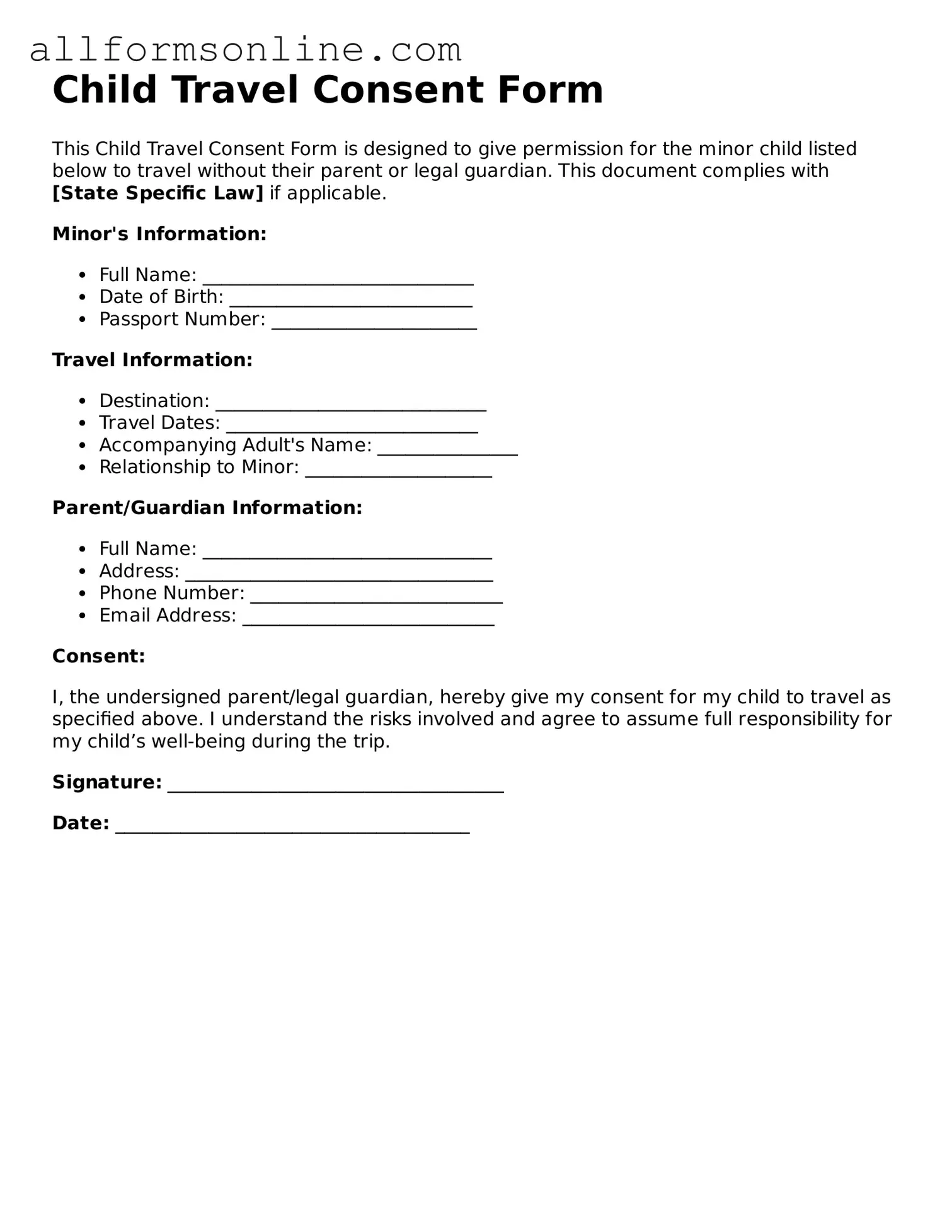What is a Child Travel Consent Form?
A Child Travel Consent Form is a legal document that allows a child to travel without one or both parents or guardians. It provides permission for the child to leave the country or travel domestically with someone else. This form is often required by airlines, border control, and other authorities to ensure the child's safety and to prevent potential abductions.
When do I need a Child Travel Consent Form?
You need a Child Travel Consent Form when a child is traveling with someone who is not their parent or legal guardian. This includes trips with relatives, friends, or even school groups. It's also advisable to have this form when traveling alone with your child, especially if you're separated from the other parent.
What information is required on the form?
The form typically requires the child's full name, date of birth, and travel details, including the destination and duration of the trip. It should also include the names and contact information of the traveling adult and the non-traveling parent or guardian. Signatures from both parents or guardians may be necessary, along with a notary public's acknowledgment.
Is a Child Travel Consent Form legally binding?
Yes, a Child Travel Consent Form is a legally binding document. It serves as proof that the traveling adult has permission from the child's parent or guardian to take the child on the trip. However, laws can vary by state and country, so it’s essential to ensure that the form complies with local regulations.
Do I need to have the form notarized?
While notarization is not always required, it is highly recommended. Having the form notarized adds an extra layer of authenticity and can help prevent complications during travel. Some airlines or border authorities may specifically request a notarized document, so check their requirements before traveling.
Can I create my own Child Travel Consent Form?
You can create your own Child Travel Consent Form, but it must include all necessary information and be formatted correctly. Many templates are available online that can help ensure you cover all the essential elements. However, it’s wise to consult a legal professional to ensure your form meets all legal requirements.
What should I do if the other parent refuses to sign the form?
If the other parent refuses to sign the Child Travel Consent Form, you may need to seek legal advice. In some cases, obtaining a court order may be necessary to allow the child to travel. Always prioritize open communication and try to resolve the issue amicably, but be prepared to take legal steps if required.
